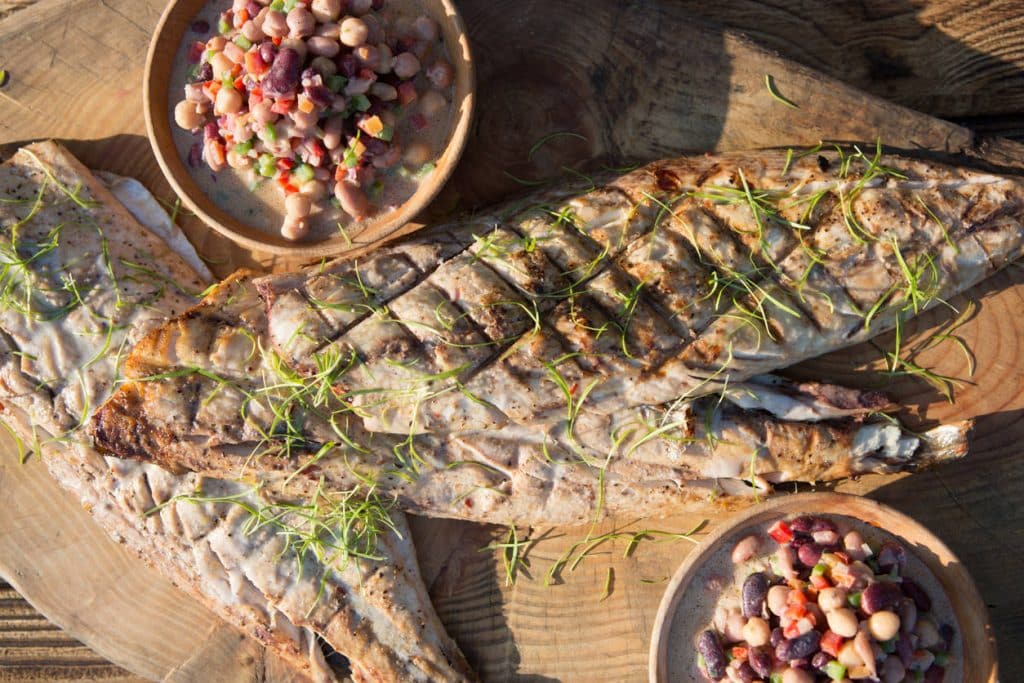African food culture

Like most cuisines, regional African cuisines are based on climate and locally grown crops and protein sources. The main ingredients include grains, fruits and vegetables that vary by region, and a general combination of dairy and meat products.
In central Africa, the main components of food culture include onions, rice, sorghum, yams, bananas, spinach, millet, dates, okra and garlic. While goat and chicken are used as meat, fish also has an important place in Central African cuisine. In the northern regions of Africa, the cuisine culture is closer to Middle Eastern traditions, with meat and spices figuring prominently. In the East African geography, grains, millet, rice and local vegetables, as well as coconuts, occupy an important place.
Eastern African Food Culture

East Africa, which features the largest lakes and highest mountains on the African continent, includes Burundi, Djibouti, Eritrea, Ethiopia, Sudan, Kenya, the Comoros Islands, Rwanda, Seychelles, Somalia, Tanzania and Uganda. There are two types of climates in East Africa, namely the dry season and the rainy season. Products that can be easily produced in these climatic conditions are at the forefront in East Africa.
Meat consumption is low in East African food culture. Cow, sheep and goat meat is considered to be an indicator of wealth. In addition, the meat of animals such as crocodiles, antelopes and wild boars is also eaten in East Africa. Although chicken breeding is common throughout the region, chicken dishes are generally served to guests.
The most well-known ingredients of East African cuisine are millet, grain, rice, white and yellow potatoes, black-eyed peas, peas, palm and okra. In addition to herbs and spices, coconut is also frequently used in cooking. The British and Indians brought items such as curry, lentils and pickles to the region.
The most prominent country in East African cuisine is Ethiopia – which some consider a vegetarian’s paradise. The influence of various religions in Ethiopia, which include Islam and Ethiopian Orthodox Christianity, provides guidelines for meat consumption in specified periods, while a vegan diet applies during the seven fasting periods of the Coptic Orthodox Church. Berbere, obtained by blending fifteen spices, is an important element in Ethiopian dishes. We recommend it to those who like spicy flavors.
North African Cuisine

Its position as a prominent trade center brought a range of influences to North African cuisine. As a cultural crossroads, the Egyptian, Moroccan and Algerian cuisines are among the richest cuisines in the world today.
North Africa, the connecting road to Europe, was home to ancient trade routes. Spicy food stands out in this arid region with a thirsty climate. Cities such as Sfax, in Tunisia, hosted enormous spice bazaars that drew traders and consumers alike.
Couscous, a Berber dish, is perhaps one of the most well-known originating from North Africa. B’stilla pastry (puff pastry) with a filling of vegetables, spices, and pigeon, chicken or quail meat, is a well-known Moroccan specialty. Tagine, şakşuka, map, l’ham de maracas, mhadjeb and mechoui are also local delicacies that should be sampled during a visit to Morocco.
African Dishes

While African cuisine is incredibly diverse, there are certain dishes that are identified directly with the African continent.
Cape Malay is a cooking style developed by the slaves and indentured servants from India, Malaysia and Indonesia brought to South Africa by Dutch colonialists. Dishes feature spices such as turmeric, cumin and coriander, as well as cloves, cardamon and cinnamon. Bobotie, a mild curry with custard and yellow rice, is one of the most well-known dishes on the Cape Malay-style menu.
The snoek (a type of snake mackerel) looks like an eel and tastes like mackerel. In the Cape region of South Africa, the traditional way to cook the fish is to fill it with apricot marmalade, wrap it in aluminum foil and grill it on a barbecue. It is a unique dish!
Another dish of South African origin is biltong. Similar to beef jerky, another cured meat, biltong is traditionally prepared using antelope meat, which is leaner than beef.
Injera is a type of fermented bread similar to a pancake. It is prevalent particularly in in Ethiopia and Somalia. Although it can also be made with millet, barley or rice, traditional injera is made with teff flour.
Melktert, brought to Africa by the Dutch, is a classic milk tart. It is exceptionally light and has become quite popular as a dessert.
African Coffees

Thanks to the unique structure of the African climate and flora, African coffees are considered extraordinary. While most are highly acidic, the beans offer a wide range of flavors according to the region where the coffee is grown.
Coffee from Uganda, Kenya, Ethiopia, Rwanda and Tanzania typically has a light bodied texture and acidic, fruity or earthy flavors. Kenya, where many of these coffees are grown, is home to one of the world’s most advanced coffee industries; an average of 100 million tons of coffee is produced annually while approximately 150,000 farmers and 6 million Kenyans indirectly earn income from the coffee industry. Most of the production is provided by small producers and the cooperative system is used.
Visitors to these countries can tour various coffee farms and view the processes used to turn these beans into the most delicious coffees in the world.
Stories knock at your door!
You can easily download images, and share on your social media accounts via your smartphone. Just press and hold the story, and save or share the image you have selected via the menu that appears.




